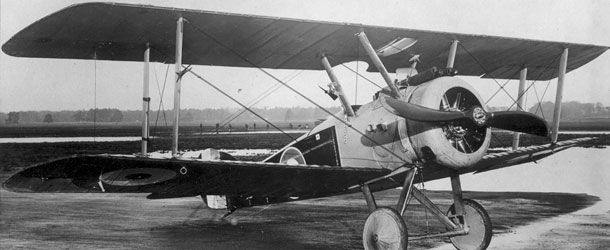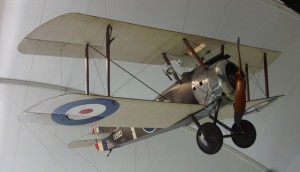The single-seat biplane Sopwith Camel is one of the top fighters of all times - it accounted for 1294 aerial victories during World War 1, more than any other Allied aircraft. This iconic airplane is one of the upcoming releases in the WW1 Wings of Glory Airplane Packs line. It was difficult and dangerous to fly for an inexperienced pilot, due to its unforgiving flight characteristics, notably the forward-set center of gravity coupled with the engine's natural torque pull. But the Sopwith Camel was a fantastic dogfighter in the hands of a skilled pilot.
A development of the elegant - and pleasant to fly - Sopwith Pup, the Camel was so called due to the humped fairing over its twin machine guns. Much like a real camel, this aircraft could turn and give you a vicious bite. His appearance was much similar to the Pup, but the Camel offered heavier armament and better performance. It was equipped with powerful engines and carried twin Vickers guns as standard equipment.
The engine, guns, pilot, cockpit and fuel were all concentrated in a length of seven feet of the fuselage. Aluminium panels covered the first bay behind the engine and plywood was installed at the end of the cockpit, with the remainder of the fuselage covered in fabric. A small windscreen was fitted behind the guns to shield the pilot.

The Sopwith Camel accounted more aerial victories during World War 1 than any other Allied aircraft.
The Sopwith Camel was powered by a 130 hp Clerget 9B or 150 hp (B.R.1) Bentley Rotary engine, which had a tendency to choke and quit if the fuel-air mixture was not leaned out after climbing more than 200 ft. Being tail heavy, the Camel would tend to stall and spin without power. The fighter was also produced with other engines installed, such as the 110 hp Le Rhone or the 110 hp Gnome Monosoupape. The most powerful engine to be used in the Camel (c/n B3891) was the French built 170 hp Le Rhone 9R: with such a power, the Camel was able to climb to 10,000 feet in less than ten minutes.
The Camel entered service in June 1917 with the No. 4 Squadron of the Royal Naval Air Service, near Dunkirk. The Canadian ace Alexander MacDonald Shook scored the Camel's first victory of the war, shooting down an Albatros D.III on June, 4th. The following month, the Royal Flying Corps received its first units of the aircraft, and by the end of the year, a total of 1,325 had been delivered to RFC. In February 1918, 13 squadrons were fully equipped with the Camel. The Sopwith Camel was used in the Battle of Ypres in July 1917 and was used for offensive patrols and ground strafing. It also served as a light bomber and in one operation the No. 28 and 70 squadrons bombed the Rumbeke Aerodrome with twenty-two 25 lb bombs.
The Camel Royal Navy version (2F) had a slightly smaller wing span and the Vickers gun were replaced by an upward angled Lewis gun, firing through the center section cutout. The 2F also operated as a dive bomber carrying two 50 lb. bombs under the fuselage. Camels served on five aircraft carriers, two battleships and twenty-six cruisers. By mid-1918, the Camel was becoming limited by its slow speed and comparatively poor performance at altitudes over 12,000 ft (3,650 m), but it was then used as a ground-attack and infantry support aircraft.
The Camel did not remain long in post-war service with the RAF and was replaced by the Sopwith Snipe. However, it continued service with the Belgian Aviation Militaire, The Canadian Air Force, the Royal Hellenic Naval Air Service, the Polish Air Force, and the US Navy. A total of 5,490 camels were ordered, but the actual number of aircraft delivered has not been determined.
More than 250 Entente aces used the Camel. The Sopwith Camel is also famous because it was the aircraft used by the ace Roy Brown when he was credited with shooting down Manfred von Richtofen, the Red Baron. With 54 victories, Donald MacLaren is appointed as the pilot who scored more victories with this fighter. The Sopwith Camel flied by Major William Barker, serial no. B6313, became the most successful fighter aircraft in the history of the RAF, shooting down 46 aircraft and balloons from September 1917 to September 1918 in 404 operational hours flying.
The William Barker’s Camel is one of the three versions to be featured in the WW1 Wings of Glory Airplane Packs, and the other two versions were flied by Aubrey Elwood and Harold Francis Stackard. These aces will be presented in a next preview article.
Information sources: The Aerodrome, Wikipedia, Military Factory, WW1 Aviation, The Aviation History Online Museum, Royal Air Force Museum.










